COVID-19
A majority of healthcare marketers say they’re decreasing promotional budgets this year in response to coronavirus, as they intensify use of digital but brace for an impact on drug launches.
That’s the takeaway from a poll MM&M ran last month on its website to help track how the industry is reacting to COVID-19. As of Wednesday, the survey had drawn 175 responses.
A majority (46.2%) of healthcare marketers said they’re dialing back 2020 budgets, vs. 18.5% reporting an increase. Another 35.3% said they’re holding the line on spending. A further 75.9% reported that coronavirus was either a significant or very significant factor in those decisions.
Where might these budget changes manifest? A massive move to digital to supplant in-person tools is just about the one thing most pundits seem to agree on. Beyond that, opinions differ. Still, even in the four weeks or so since U.S. cases of the virus began escalating – a very short period with which to implement most any new business solution – signs of a more lasting transformation are afoot.
“This is a time to revisit the traditional approaches to marketing,” commented one respondent. “If you did it two to 10 years ago, it probably needs a fresh POV.”
The pandemic-spurred plunge in in-person meetings, wider adoption of telemedicine and heightened restrictions on rep access and business travel have drastically altered the marketing landscape. Companies, it would seem, have little choice but to change.
Indeed, another called what’s happening now a “forced evolution,” akin to that of 2008, one which could press the drug industry to become much more agile: “Pharma and marketing needs to evolve to be much more adaptive to the rare events that continue to occur on a more frequent basis in our world. We need to regain control of the supply chains (media inventory, active pharmaceutical ingredients, information) and be much more dynamic in solving these large problems.”
Asked for their take on what tactics may evolve to the greatest extent, most of the respondents to MM&M’s coronavirus survey (73.7%) chose HCP marketing, vs. patient (15.8%) and payer (10.5%). The survey also sought to quantify the extent to which industry is ramping up non-personal promotion (NPP). Some 43.5% said they were hiking NPP, vs. 26.5% decreasing it – not surprisingly, 73.9% said coronavirus was either a significant or very significant factor in that decision.
Companies in the midst of drug launches have taken divergent approaches. At least one pharma, Bristol Myers Squibb, has pushed back a launch, for its Zeposia MS drug, while others are pressing ahead despite the difficult circumstances (see below). Survey results reflect the disagreement: More than half of respondents (54.1%) expect product launches will be affected negatively, while smaller (yet notable) percentages predicted that CV-19 will exert either no effect (28.2%) or a positive one (17.6%) on roll-outs.
Finally, survey-takers ranked coronavirus-related concerns in terms of expected impact on a 1-to-5 scale (with 1 being the highest). Most predicted a trio of factors to exert the biggest impact: treatment interruptions (i.e., prescription refills, new therapy starts and other effects on medicine use), with 68.0% ranking this either a 1 or a 2; after which came clinical trial delays and supply chain disruptions, with 62.9% and 55.6%, respectively, scoring those factors either a 1 or a 2.
These days, biopharma companies and medical device makers are scrambling to adjust to the new reality, keeping one eye on maintaining the flow of vital medical communication and another on the future. Once the threat from CV-19 is brought under control, and businesses get back on their feet, it’s hard to imagine marketing going back to “the way it was.”
That’s why, as a companion to the survey results on budgets, we’ve explored a few other areas where companies, agencies and vendors in the life-science space are taking advantage of this unprecedented period to implement real change – including making shifts that were thought to be too difficult to pull off before the virus. Here’s a speculative, early glimpse at a few facets of the post-CV landscape:
Zoom goes the sales force
Sources interviewed for this article say marketers’ dire budget forecast is probably more a function of the immediate slashing of the field force and events budgets – coupled with a move to less-pricey, digital engagement tactics – rather than a sure sign of future belt-tightening. That said, experts predict lasting effects.
Over the last several years, pharma has been adjusting to decreased access to hospitals and surgical suites by making greater use of digital. As the CV-19 pandemic puts a crimp on in-person details and meetings, in order to maintain HCP relationships industry’s reliance on some of its priciest professional tactics is easing even further.
For instance, during the month of March, pharma e-mail volume rose by 6% (with a comparable increase in HCP open rates, a 12-month peak), observed email-marketing firm DMD, adding that HCP website traffic rose by 6.5%. Meanwhile, more than three-quarters of doctors said they have increased their use of digital resources during the COVID-19 pandemic, and 47% are turning to online research to replace information they had previously received from a field rep, according to a Healthcast study of 361 doctors, also in March.
That’s reflected in how companies are launching products. Take the company Intracellular Therapies, which launched the drug Caplyta for schizophrenia last month. Given these “extraordinary and challenging” times, ITC said, adaptations to its approach include remote detailing, sampling and peer-to-peer interactions. “We will also rely more heavily on digital promotion to augment the remote interactions of our sales colleagues,” read a March 23 company statement. Ditto for some large companies.
What we’re really seeing is “an expeditious view of something that’s been long-coming anyway,” said Matt Bostrom, Finn Partners’ chief strategy officer. Certainly for the short term, Bostrom says the agency’s life science clients are finding other ways to connect.
“It would be optimistic for a company to expect a large return to events and conferences this year in any scalable way,” said Bostrom, adding that this sector was “quicker to act and react” than tech or consumer once the pandemic picked up earlier this year.
Long-term, it’s not going out on a limb to expect that a digital-first formula will be more widely utilized. Expect a greater emphasis on personalizing content as well as a push toward newer technologies like AR and VR to replicate live interaction, he said. As elective procedures and routine office visits are postponed, some clients are also deploying tools like app-based care to ensure patients feel supported, too. Timelines for some of that will exceed CV-19.
“The good news is, we don’t hear anybody saying, ‘Business is going to stop,’” said Bostrom. “We’re talking about pretty critical marketing efforts to ensure that clinicians are equipped with what they need from companies, that patients’ needs are being met, and that firms have the right tools in place to keep a quality, two-way discussion going when they can’t do that in person.”
In other words, as medicine returns to normal, biopharma marketers may emerge more agile, and with a renewed mandate to examine resource allocation and messaging to their most important customer: the clinician.
The savvy companies, predicted one HCP marketing director based at a large pharma, will not tighten budgets but actually invest more in development of creative messages, adding that he hopes a “flexibility in getting messages out” will endure after the crisis is over. “None of us will know exactly how to address the pandemic issue when we are back, or even to address it at all, but it will be a tricky message to communicate regardless.
“Reacting more quickly to the marketplace will become more important,” he continued, “and pharma needs to find quicker, more agile ways of responding to all of our customer segments.”
Renewed focus on patient communication
The flow of healthcare communication has increased exponentially during the crisis, but patients’ needs, arguably, may have suffered. The message the CDC sent during the pandemic’s early stages was, “Stay home if you’re sick,” and especially if you have an underlying medical condition.
But irrespective of what’s going on acutely with CV-19, there needs to be more dialogue directed toward people with chronic diseases and what they should be doing to stay healthy, not to mention the constant need for primary care, argues Dr. Tania Elliott, co-chair of the virtual health clinical task force at NYU Langone Health.
“I have gotten emails from literally every single vendor that I’ve ever given my e-maiI address to…about their response to COVID-19,” said Dr. Elliott in a mid-March interview with MM&M. “Meanwhile, I’m pregnant and I haven’t heard a word – a peep – about prenatal care from my healthcare provider.”
When she proactively reached out to her HCP, it was a challenge to get a response and even then, Dr. Elliott recalled feeling like she was being dissuaded by staff from asking too many questions for fear of unduly burdening an already maxed-out provider and health system.
“I get worried,” she added, “that with all the media and information focusing on staying away from the hospital, we’ll end up in a situation in a couple of months from now that chronic diseases are poorly managed and patients have a shortage of medications because they didn’t go to their doctor or can’t get in touch with them.”
Research backs up her concerns. According to a survey of 1,300 patients with chronic disease, fielded on March 11 (just prior to one of the first weeks of significant impact of the pandemic in the U.S.), 73% of respondents said they feel vulnerable to COVID-19, yet just 36% said they had discussed those concerns with their healthcare providers, vs. 58% who said they had talked to “others with their condition” about it.
By March 19, noted Health Perspectives Group, which has been running the surveys on an ongoing basis during the pandemic, the percent who had discussed COVID-19 concerns with fellow patients rose to 72%, vs. 53% with HCPs. Meanwhile, 63% said the media is not adequately addressing concerns for their specific condition and vulnerability to COVID-19.
According to another study from CMI/Compas that assessed the volume and content of such discussions on social media, COVID-19 conversations spiked among HCPs and consumers around February 2, and since then both have remained active on social. For instance, oncology patients and caregivers have expressed concerns about missed appointments and delayed tests. Those with autoimmune disease have shared worries over whether they should continue their medications due to the immunosuppressant nature of the drugs.
The firm AllazoHealth, which facilitates medication adherence and therapy initiation programs, said that COVID-19 has widened disparities in medication adherence between patient populations. While there’s been a massive uptick in patients requesting early medication refills (due to PBMs loosening their rules for such refills), AllazoHealth determined through AI analysis that the gap between high-risk and low-risk patients filling their medications late has increased from 14% to 20%.
Thus, high-risk patients need the most outreach to stay adherent to their maintenance medications during the pandemic. It also determined that many pharma companies have not yet updated the logic for their copay card programs to allow early refills.
“This puts patients who are trying to get extra medication to prepare for Covid in the position of having to choose between paying their full copay to get the medication right away or to wait longer before filling so that they can use their copay card,” said AllazoHealth CEO Clifford Jones.
Patients who can’t afford to fill the medication without the copay card may avoid refilling the brand altogether rather than risk exposure by making an extra trip to the pharmacy, said Jones. Home delivery programs can mitigate this concern, if available in the patient’s area.
The answer to the aforementioned communication gap, said Dr. Elliott, involves encouraging patients to utilize alternative methods for chronic-disease management. “The operative word is ‘taking care,’” she said, “which doesn’t necessarily mean going to the doctor’s office. You can seek care through text message, video consultation.”
Her other suggestion is for the health authorities, or retailers like CVS Health and Walmart, to offer more in the way of general guidance and communication for patients around things like medication refills and maintaining the vaccine schedule. Health plans, pharmacies and others in the industry must ensure that high-risk patients are supported even more during this tumultuous time as these patients are less likely to take action on their own.
“Yes, I get it; you’re overwhelmed,” she said of the health system, “but you also have [existing] patients. Technically, we want people to be following up with their doctor in one way, shape or form.”
A new role for telemedicine
On average, physician office visits are down by as much as half in the wake of COVID-19. That’s per a survey of 199 specialist physicians across 13 different sub-specialties conducted last month by the investment bank Barclays. The primary reason behind the declines: patient cancellation of visits.
Enter telemedicine. Some 88% of providers are leveraging remote engagement alternatives of some sort, reported IQVIA in a March 27 report on the impact of the virus on the pharmaceutical market. That’s being spurred on, in part, by health systems, which are promoting video visits as alternatives to in-office ones, and health plans, which have lowered co-pays to make such visits more accessible to their members.
The specialist physicians who participated in the Barclays survey said patients’ refill requests are up and that the clinicians are willing to grant such requests without seeing the patient in-person, even if it’s a new ‘script or a request for a different drug. Meanwhile, federal officials this year expanded Medicare coverage of virtual visits and have hinted at smoothing out regulations for interstate licensing, which has been another barrier to adoption.
Some are saying this could be the inflection point that telemedicine has so far lacked.
“This epidemic has pushed the adoption curve of telemedicine,” said Dr. Prentiss Taylor, VP for medical affairs for Doctor On Demand, a large, national telemedicine service. “We’ve seen quite a few first-time patients who never used it before but had access” through their employer or insurer.
That said, “All the telemedicine companies have been challenged by a huge surge in volume,” he added.
For its part, Doctor On Demand has been managing that demand by tapping into a national reserve of physicians to conduct its face-to face video visits. The firm also launched a self-assessment tool that allows people to figure out how sick they are based on their symptoms and has added virtual group visits, during which its chief medical officer answers questions submitted via chat. A virtual primary care program had been launched prior to the pandemic to serve people lacking a PCP.
These days, the biggest pandemic role being played by telemedicine, said Dr. Taylor, is in getting people who are very sick into supportive care, guiding people to tests if they think they’ve been exposed, as well as confirming if a person has CV-19, something else or an influenza-like illness.
“Our doctors, who average 15 years of experience, are pretty adept at figuring out whether the presentation is classic for flu or COVID-19 by taking a good history,” said Dr. Taylor, who added that the flu season is far from over.
On the other hand, whether telemedicine’s current wave has lasting effects, and to what extent the modality establishes itself as a go-to for routine care post-crisis, seems to be an open question.
“I anticipate that both the degree to which telemedicine visits are top-of-mind for people, and the engagement with it, are going to be lingering, in a good way, after this pandemic,” said Dr. Taylor.
Health systems, which he pointed out have ramped up telemedicine capabilities quickly because they don’t want people who are mildly ill coming into ambulatory clinics, probably won’t put the genie back in the bottle. Meanwhile, he expects some of the emergency government measures enacted during the pandemic to become permanent, once officials look back and see the benefit, particularly among Medicare beneficiaries.
“People who have access to this will appreciate the value of the benefit,” said Dr. Taylor. “I think we’re at yet another inflection point.”
The post Healthcare marketers slash budgets, step up digital, as COVID-19 forces an evolution appeared first on MM&M – Medical Marketing and Media.










